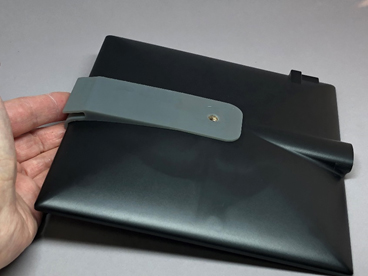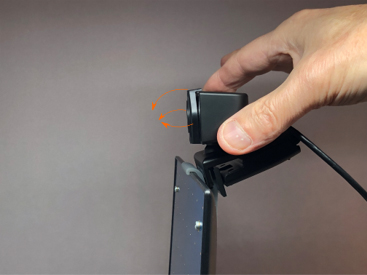The Optical Kit for Acoustic Camera ACAM_64 includes the following:
The Optical Kit for Acoustic Camera ACAM_64 includes the following:
To mount the optical camera onto ACAM_64, follow these steps:




The location of the optical camera is offset from the center of the ACAM_64 microphone array. So, it is important to orient the optical camera so that the acoustic image and the optical image are aligned.
To properly align the two images, follow the instructions below:

| Brightness | Auto |
|---|---|
| Contrast | Auto |
| Lens | High-quality glass lens |
| Connectivity | USB |
| Field of View | 80 deg x 43 deg |
| Color Depth | Grayscale (Instrument Manager) |
| Displayed Resolution | Width: 128 pixels (Instrument Manager) |
| Rate of Image Capture | Up to 27 images/s |
| Mounting | Clips to adaptor bracket for ACAM_64 |
ACAM_64 presents acoustic images, showing sound sources in the field of view of the instrument. But it does not show an optical image, so it is difficult to match acoustic hot zones with the actual pieces of equipment creating the noise. The optical camera kit captures the scene in parallel to ACAM_64, and Instrument Manager presents the optical image superimposed onto the acoustic image. The videos below show how that optical image facilitates the interpretation of the acoustic image.
The optical image is black and white to avoid offsetting the false colors of the acoustic image. A slider adjusts the relative intensity of the optical and acoustic image, from full-optical to full-acoustic, and all degrees in between.
The field of view of the optical camera is 80 deg x 43 deg. As the field of view of ACAM_64 is adjusted, the relative size of the optical image will change accordingly:
The following files can be downloaded and played back from Instrument Manager (download links below):
149.00 $
In stock (can be backordered)
Convergence Instruments 2024 © All Rights Reserved | Privacy Policy and User Agreement | Terms and Conditions | Limited Warranty